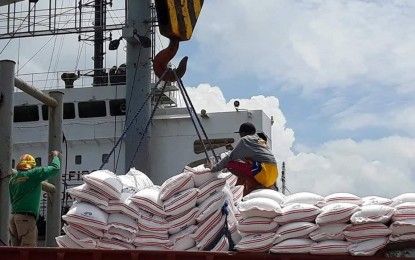By now, the high temperatures we are experiencing, which would get worse by March and April, spell a drought that would cause water to be released in the atmosphere and hopefully become precipitation or rain that would in turn water our rice fields, vegetable farms and aquaculture resources.
If rains happen too late, then our livestock would die, our fishery resources would dwindle because of receding water levels and our farms would be less productive.
The weather bureau said Luzon’s dams’ levels – which have three major users (power, irrigation and household/industrial/commercial users)-- are receding too fast because of the continuing effect of El Niño and the easterlies (warm winds from the Pacific Ocean, which causes humidity and excessive heat).
The weather bureau said eight or nine of Luzon dams are fast dipping below their serviceable levels with Angat (the principal source of potable water for the National Capital Region) decreasing by 0.25 meters and is now at 210.08 meters, or below its average high of 212 meters.
The levels in other dams are: Ipo, down by 0.11m at 99.82m; Meanwhile, the following dams have also logged a decrease in water levels: Ipo down by 0.11 at 99.82m from its normal of 101m; La Mesa, down by 0.09m from normal high of 80.15m; Ambuklao, down by 0.03m at 750.94 from normal of 752; Binga, down by 0.23m at 572.75m from 575m; San Roque, down by 0.31 m at 249.65m from 280m; Pantabangan, down by 0.27m at 192.05m from normal of 221; Magat, down by 0.34m at 183.14m from normal of 193m and Caliraya, down by 0.15m at 287.51m.
Rainfall in Luzon as of February 1 to 4 was observed at only 50mm, or below standard.
Iloilo already affected
Already, 2,586 hectares of farms in eight towns of Iloilo had been affected by El Nino, the Times reported, citing the report of the provincial agricultural office as of February 2.
Of this, 188 hectares have been completely damaged in 8 of 43 towns that submitted their drought reports.
The damage is estimated at P100 million.
The town of Anilao bore the brunt of the damage with 1,147.30 hectares of farmlands affected, followed by Oton (321.55), Tigbauan (277.96), Tubungan (211.58) and Cabatuan (204.78).
PAO also reported a total of 3,088 affected farmers across these eight towns, with Anilao having the highest number of farmers impacted at 1,176.
"Based on the damage report provided by eight municipalities, our computation indicates that approximately 7,000 hectares of standing crops have been affected, with an estimated value of around P100 million," he said.
Gov. Arthur Defensor Jr. said the provincial government is prepared to provide financial and technical assistance to farmers affected by El Niño in the form of cash insurance, so they get the benefits from the government that are more substantial.
The province has allocated P15 million for the provision of insurance premium subsidies which will be sourced from the 2023 budget.
For 2024, PAO has earmarked P86 million for the agri-fishery sector.
The national government meantime reported a record high rice imports for January 2024 of 268,006 metric tons, up by 6.15% from 252,474mt in January 2023. This figure, however, is less by 47.53% from shipments made in December 2023, the Times added.
Since January, the BPI released 373 sanitary and phytosanitary import clearances to accredited importers for the inward shipment of the staple.
Vietnam is the main source of imported rice having shipped 152,875MT, or 57.04% of total imports for January; followed by Thailand with 78,597MT, Pakistan, 24,462MT and 11,180MT from Myanmar, which is under military rule.
#ElNiño #Rice #Imports #Agriculture #OpinYon #WeTakeAStand
